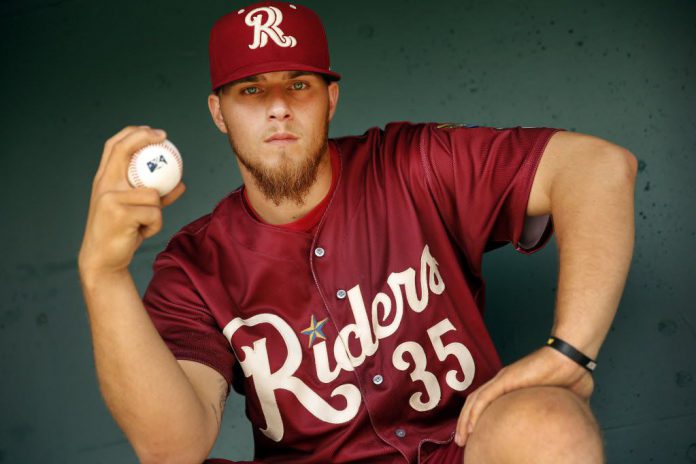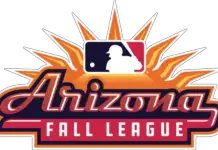“In addition to that group, we’re still going to be looking and hoping for three or four more external additions, either minor league free agents who are not on the roster in spring training or possibly guys that we commit major league contracts to.” ~ Mike Elias, regarding competition for the 2020 Orioles rotation. (from this Steve Melewski blog post)
Without knowledge of the budget or willingness to bring in rotation candidates on an MLB contract, I’m left trying to mine for value in the MiLB free agent pool. There aren’t many sexy names on the MiLB FA list, failed prospects and veterans in steep decline are the most recognizable. It’s easy to point to those guys and say “Why not? Let’s take a flier on Matt Harvey or Kohl Stewart (former 4th overall pick).” That’s not what this piece is about. It’s about taking an in-depth look at the players available and coming up with names that could provide up and down depth in 2020. If there is some actual upside, that’s a bonus. This is a shallow market, especially for starting pitchers.
So I highlighted a few different types of player. The steady, innings mop types without much upside. The talented arms who need some pitch design or usage fixes. And finally some solid arms who are probably better in a opener/once thru a lineup role but could give length if needed. Within each group there is a rough order of preference. Please remember that none of these players are locks to provide any MLB value, that’s why they are MiLB free agents and not on a 40 man roster.
My process consisted of taking every MiLB free agent pitcher and weeding out the pure relief guys and guys that were too far away from the majors. Then looking at performance and publicly available scouting reports to weed more out. Finally, taking the 20-30 most likely candidates and watching game video and coming to my own conclusions.
Flawed arms with upside, you just have to squint
Jake Thompson
Probably the name that you’d be most likely to overlook if you just looked at 2019 stats. But he’s my favorite arm on this list. Still just 25 years old, Thompson was a legit prospect at one point, making his MLB debut at 22 and being an up and down guy for a couple years before getting DFA at the end of 2018. Since getting DFA and choosing MiLB free agency in November 2018, he’s pitched 147.1 innings of 3.42 ERA ball with a 8.8 K/9, 3.1 BB/9, 0.43 HR/9. But only 31 innings of that were in affiliated ball, the rest coming in the KBO (Korean pro league) and in two Dominican Winter League stints. I was able to find one 8 inning start from 2019 in AA on which I based my observations. His fastball is only in the low 90s and doesn’t have interesting movement or spin. He’ll throw a 4S and a 2S/Sinker, but neither are particularly good and he’ll have to hide the fastball at the MLB level. The good thing is that he has the offspeed pitches to do that. He’s always had a good 2-plane slider, a plus pitch, but upon his return to affiliate ball last August, he was also throwing a nasty curveball with good shape and sharp break that was a real swing and miss pitch against lefties. He also had strong feel for a changeup that he’d throw to both handed hitters. So three MLB quality offspeed pitches that miss bats, and while the slider is mostly a chase pitch (an adjustment he made in order to prevent hanging it), the curve and change can land for strikes. He’ll have to pitch backwards, but I think he is capable of doing that.
Keury Mella
The best arm strength of anyone on this list, Mella will bump 97, even 98mph late in some starts. He throws a sinker that sits 95-96mph with big horizontal armside movement. It’s a heavy fastball mix and it’s more control than command, so hitters eventually catch up to the pitch. He throws a slurvy curveball and a changeup as well. Both pitches have an inconsistent spin axis from pitch to pitch. He’ll throws some good ones, but also waste a few or throw ones that hang. There is plenty of armspeed and he spins the ball pretty well, so he’d be a bet on developing a repeatable release on his offspeed stuff so he could command the pitches and have some consistency. It’d also behoove him to develop a 4S fastball with a more vertical spin axis to better change hitters’ eye levels. There is plenty of raw ability to unlock with some pitch design work.
Steady depth arms
Michael Peoples (correction: Peoples signed with the Yokohama Baystars of NPB, h/t to @baseballfan1721 on twitter)
There was no info out there on Michael Peoples, I mean nothing, so if nothing else, here are some words on what he throws. He’s a 28 year old righty. He is the top AAA performer on this list, with a 3.98 ERA, 4.21 FIP, and 4.2 K/BB ratio in 144.2 innings in 2019. Peoples throws a 2S/Sinker at 89-93mph with some late tail and sink. It doesn’t miss any bats, but he uses it to get ahead in counts. It gets hit hard, but generally isn’t lifted enough for extra bases. The change that spurred what I’d consider a career best performance (given the AAA run environment) is the introduction of a 4S fastball. He throws this pitch harder, 93-95mph, and only uses it up in the zone. It doesn’t have big vertical action, but it has some and he does a good job of only using it above the zone for chases. It’s his strikeout pitch. Which is a good thing because none of his offspeed stuff is very good. The curveball is the best of the bunch and is 77-79mph with good shape, but a big soft break. It doesn’t miss bats. The slider and changeup are fringy at best. He has the best command of anyone on this list and doesn’t throw many cookies, which gives his lackluster pitch mix a chance at playing at the MLB level.
Teddy Stankiewicz
Stankiewicz, 26, is not at all exciting. His 3.85 ERA in 131 AAA innings is belied by weak peripheral numbers (7.3 K/9, 2.7 BB/9, and 1.8 HR/9). His 2S fastball is just 89-93mph. It has significant armside run, but doesn’t miss any bats. His best pitch is an average to slightly above average changeup. He throws a curveball and a slider but both are below average and neither works as an out pitch. He’s going to have a lot of trouble keeping hitters from making contact at the MLB level, but I think his directional command and lively fastball will help him mop up innings in a semi-respectable manner.
Creative fits, once through the order possibilities
Colton Turner
The only lefty on this list, Turner is 28 years old and has been a reliever most of his pro career. He had TJS in 2014 which slowed his path through the minors. In 2019, he threw 93.2 innings in AAA (5.48 ERA, 4.68 FIP, 9.8 K/9, 3.4 BB/9) ranging for partial inning relief appearances to a handful of 90+ pitch, 5+ inning outings. His home park was the most hitter-friendly in the International League. He throws enough strikes, he has a viable changeup to deal with RHBs, and he holds his stuff. So he could start for a team, but the fastball is just 89-92mph in those longer outings and is pretty hittable on the plate despite decent armside hop. A better role would be multi-inning relief or an opener who can make a swing start. His velocity is more 93-94 in shorter outings which if enough to help keep it off barrels. He throws from a low 3/4 slot and features an above average sweeping curveball that is his best weapon and he commands well at the bottom of the zone.
Jackson Stephens
Stephens, 25, has worked as a multi-inning reliever the past couple years, but as recently as 2018 he was making 100 pitch starts. In shorter outings (2-3 IP), his fastball sits 94-95mph and he throws both a 4S and a sinker. The 4S is very flat and straight and should probably be reworked or shelved. Generally pitchers try and mirror the spin axis of their 4S fastballs and their curveballs, but in Stephens’s case, the curve mirrors the sinker’s spin axis. The curve, by the way, is his true weapon. It averaged 3146 RPM of spin in 2018 which was 5th in all of the MLB that year. The pitch has a slurvy tilt but gets plus horizontal gloveside movement and above average drop as well. It’s his most effective pitch, but he only uses it 15% of the times. He also will throw a fringy cutterish slider and an occasional changeup. This is a pitch mix bet. He’s been a replacement level guy in the majors, but I think he’s just a pitch mix adjustment away from having some value.

























